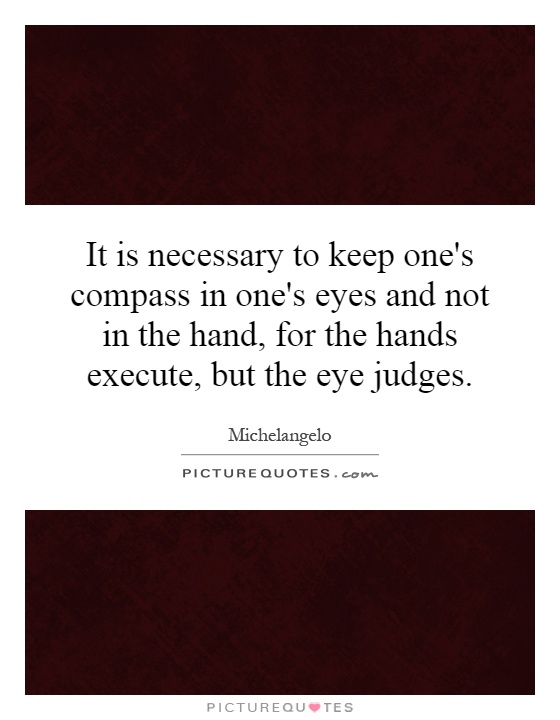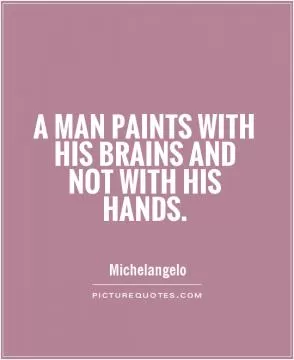It is necessary to keep one's compass in one's eyes and not in the hand, for the hands execute, but the eye judges

It is necessary to keep one's compass in one's eyes and not in the hand, for the hands execute, but the eye judges
Michelangelo, the renowned Italian artist, sculptor, and architect, is often considered one of the greatest artists of all time. His works, such as the statue of David and the ceiling of the Sistine Chapel, are celebrated for their beauty, complexity, and emotional depth. Michelangelo's creative process was deeply rooted in his ability to visualize his creations in his mind's eye before bringing them to life with his hands. This quote, "It is necessary to keep one's compass in one's eyes and not in the hand, for the hands execute, but the eye judges," perfectly encapsulates Michelangelo's approach to art and craftsmanship.For Michelangelo, the act of creation began with a clear vision in his mind. He would meticulously plan and design his works, using his "compass" – his inner vision and imagination – to guide him. This mental image served as a blueprint for his hands to follow, allowing him to bring his artistic vision to fruition with precision and skill. Michelangelo understood the importance of maintaining a strong connection between his creative vision and the physical act of creation. By keeping his "compass in his eyes," he was able to ensure that his hands executed his designs with the utmost care and attention to detail.
Michelangelo's ability to translate his inner vision into tangible works of art is evident in his masterpiece, the ceiling of the Sistine Chapel. The intricate frescoes that adorn the chapel's ceiling are a testament to his skill as an artist and his unwavering commitment to his creative vision. Each figure, each detail, was carefully planned and executed with precision, resulting in a breathtaking display of beauty and artistry. Michelangelo's hands may have been the tools that brought his vision to life, but it was his "eye" – his ability to judge and refine his creations – that truly set him apart as a master artist.












 Friendship Quotes
Friendship Quotes Love Quotes
Love Quotes Life Quotes
Life Quotes Funny Quotes
Funny Quotes Motivational Quotes
Motivational Quotes Inspirational Quotes
Inspirational Quotes